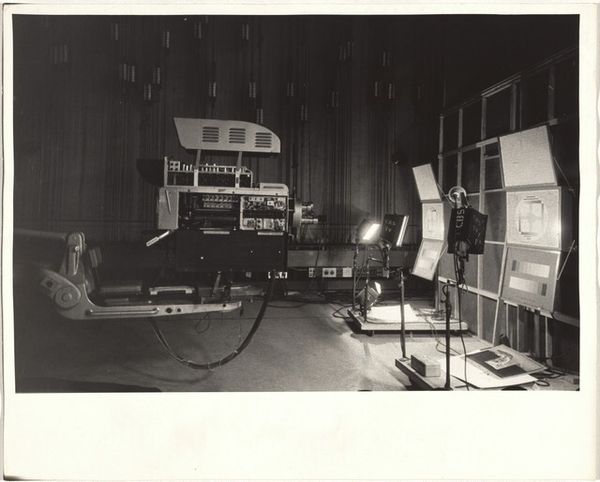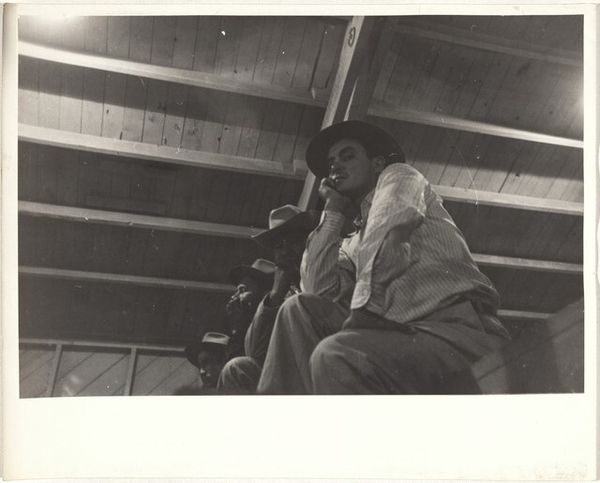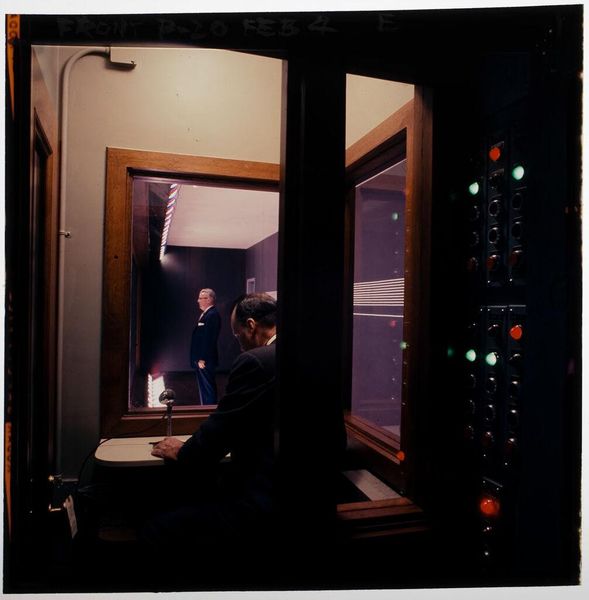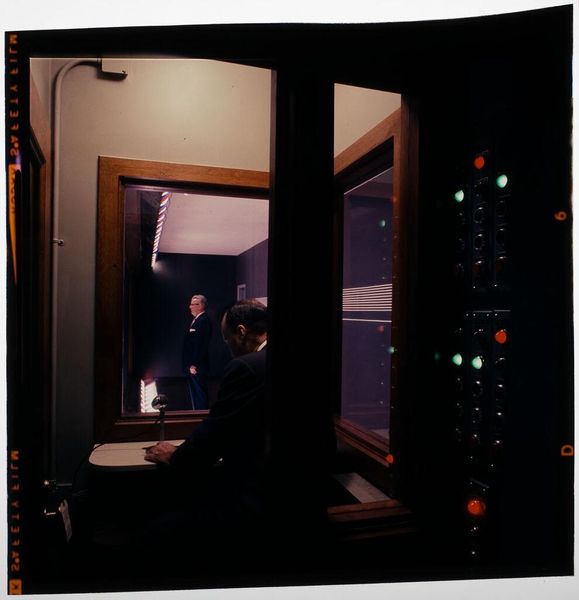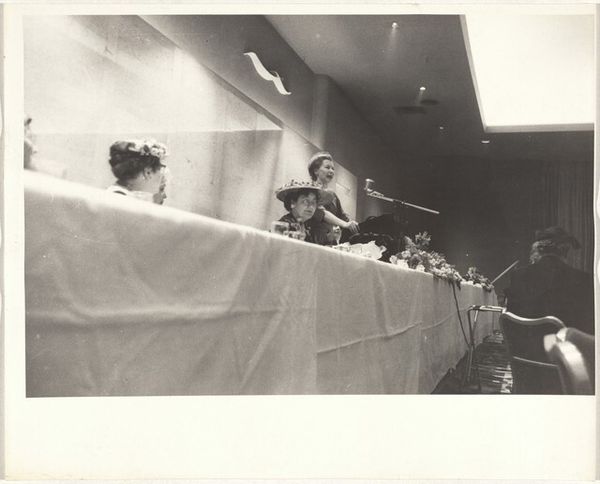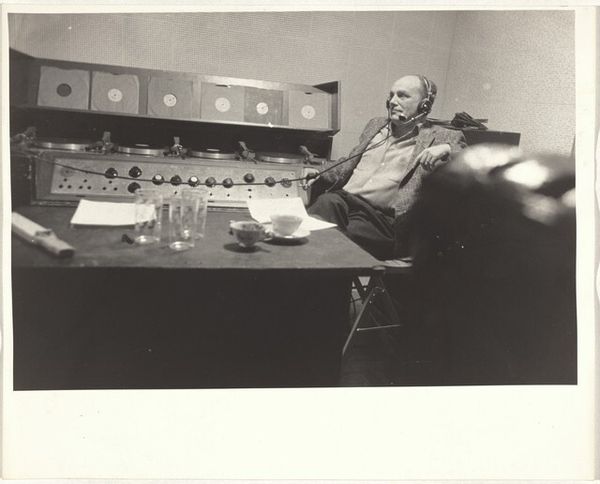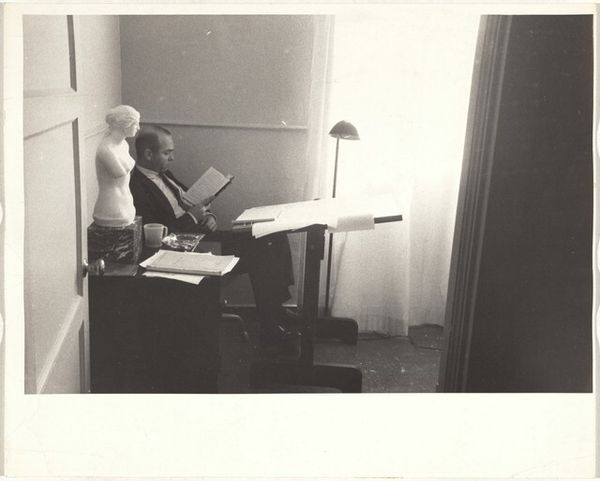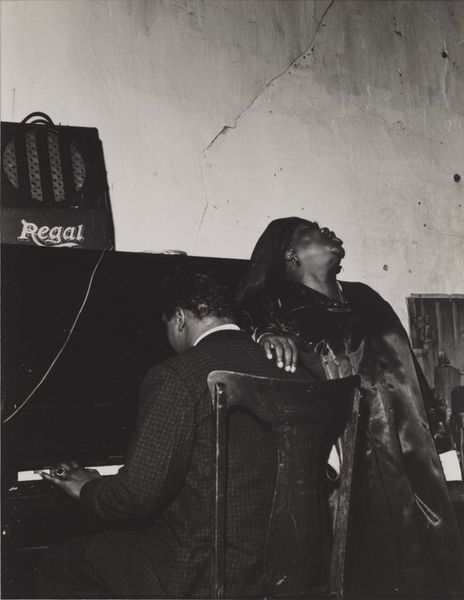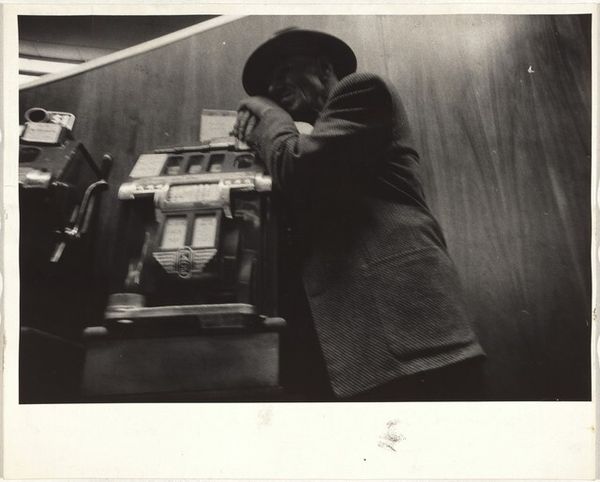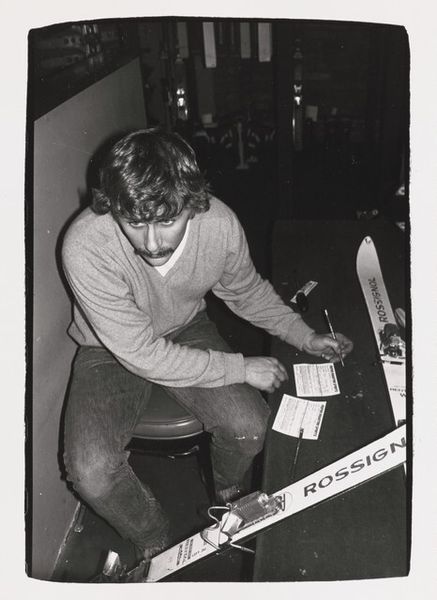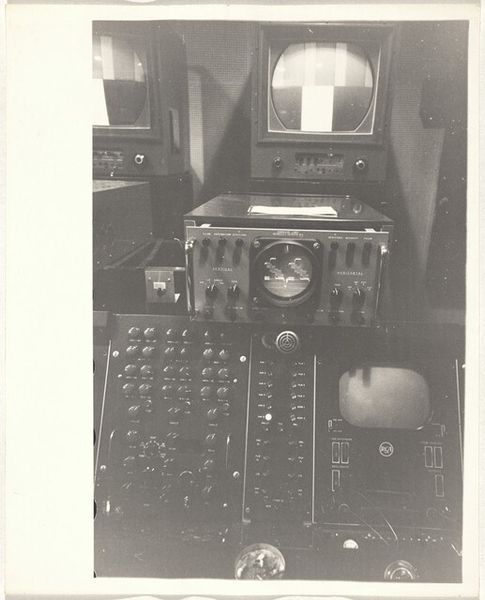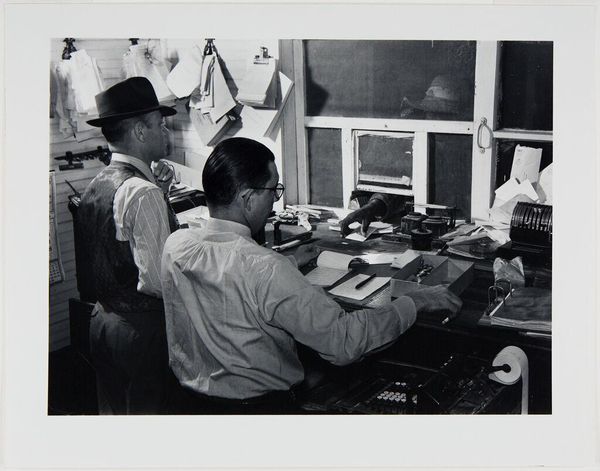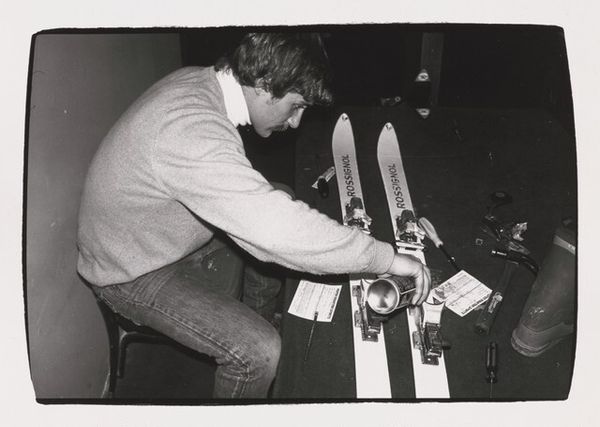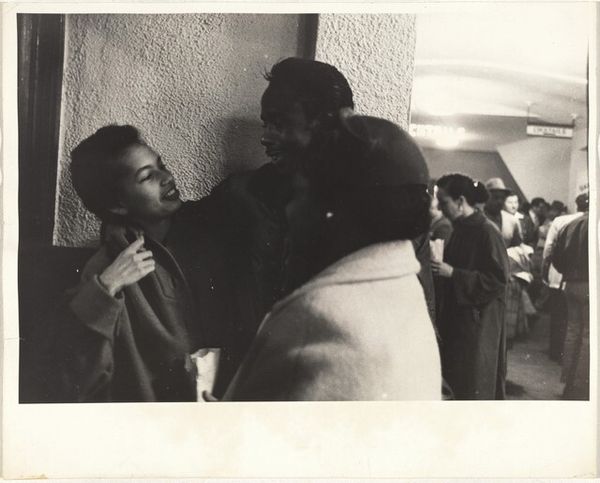
print, photography, gelatin-silver-print
#
portrait
# print
#
social-realism
#
street-photography
#
photography
#
historical photography
#
gelatin-silver-print
#
pop-art
Dimensions: sheet: 20.3 x 25.2 cm (8 x 9 15/16 in.)
Copyright: National Gallery of Art: CC0 1.0
Editor: Here we have Robert Frank's "Couple by cigarette machine--New Mexico," a gelatin silver print from 1955. I'm immediately struck by the sense of alienation; the two figures seem completely disconnected despite their proximity. What do you see in this piece? Curator: Well, looking at it through a historical lens, this image speaks volumes about the socio-economic landscape of 1950s America. Frank, as an outsider, captured a rawness that was often glossed over in mainstream media. Notice the cigarette machine itself - a ubiquitous symbol of consumer culture and, perhaps, addiction. The couple's disconnection highlights a growing sense of social fragmentation. Who do you think was the target audience for this type of image? Editor: Possibly a more critical, art-house crowd? It definitely feels like a counterpoint to the idealized imagery of the era. The figures aren’t glamorous; they look like real people, maybe even a little lost. Curator: Exactly. And think about the politics of imagery. Frank’s work challenged the prevailing narrative of American prosperity and racial harmony, leading to initial controversy and later, widespread acclaim for its honest portrayal of social realities. This photograph acts almost like a historical document reflecting on societal norms of the time. Do you notice the positioning and gestures of each of the persons portrayed in this piece? Editor: I see that the girl’s face appears concerned; almost hopeless, whilst the boy just appears blank. Are these stereotypes that have shaped our expectations since the photograph was taken, or was this Frank intentionally showing some societal problems with gender in 1950s America? Curator: It is tricky territory, as these expressions might have more mundane origins, for instance their current life-worries on that day. In either case, their body language speaks volumes and can be contrasted to some of the optimism we have come to expect when viewing other mid-century photographs and pictures. Editor: I’ve never thought about social fragmentation in images. Curator: Indeed, this kind of photo provides more historical context through a modern artistic lens, and is not afraid to expose difficult truths. It also allows you to study consumerism. This piece certainly expands your world-view, in many directions. Editor: I will not be able to look at 50's artwork in the same manner again.
Comments
No comments
Be the first to comment and join the conversation on the ultimate creative platform.
